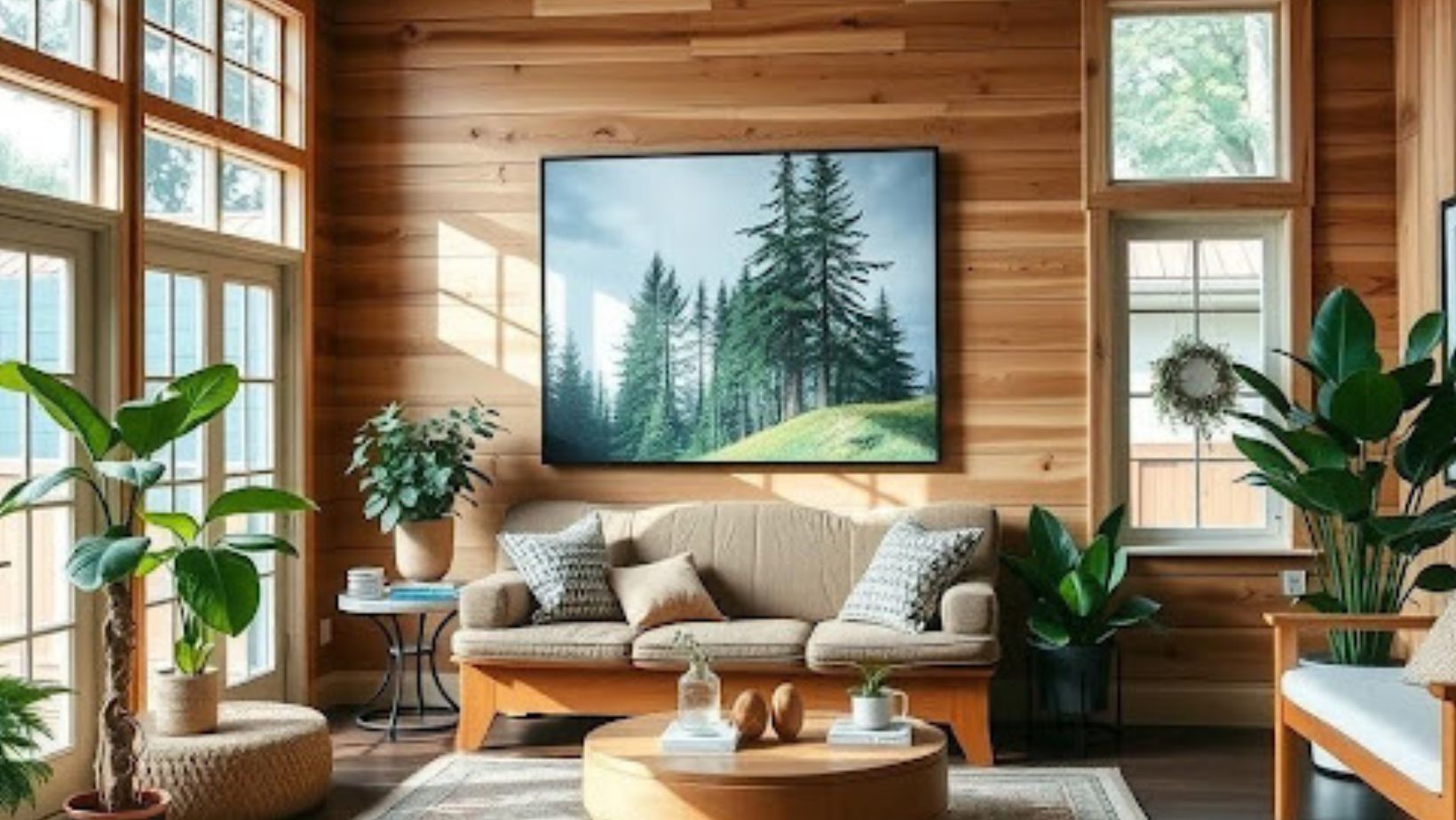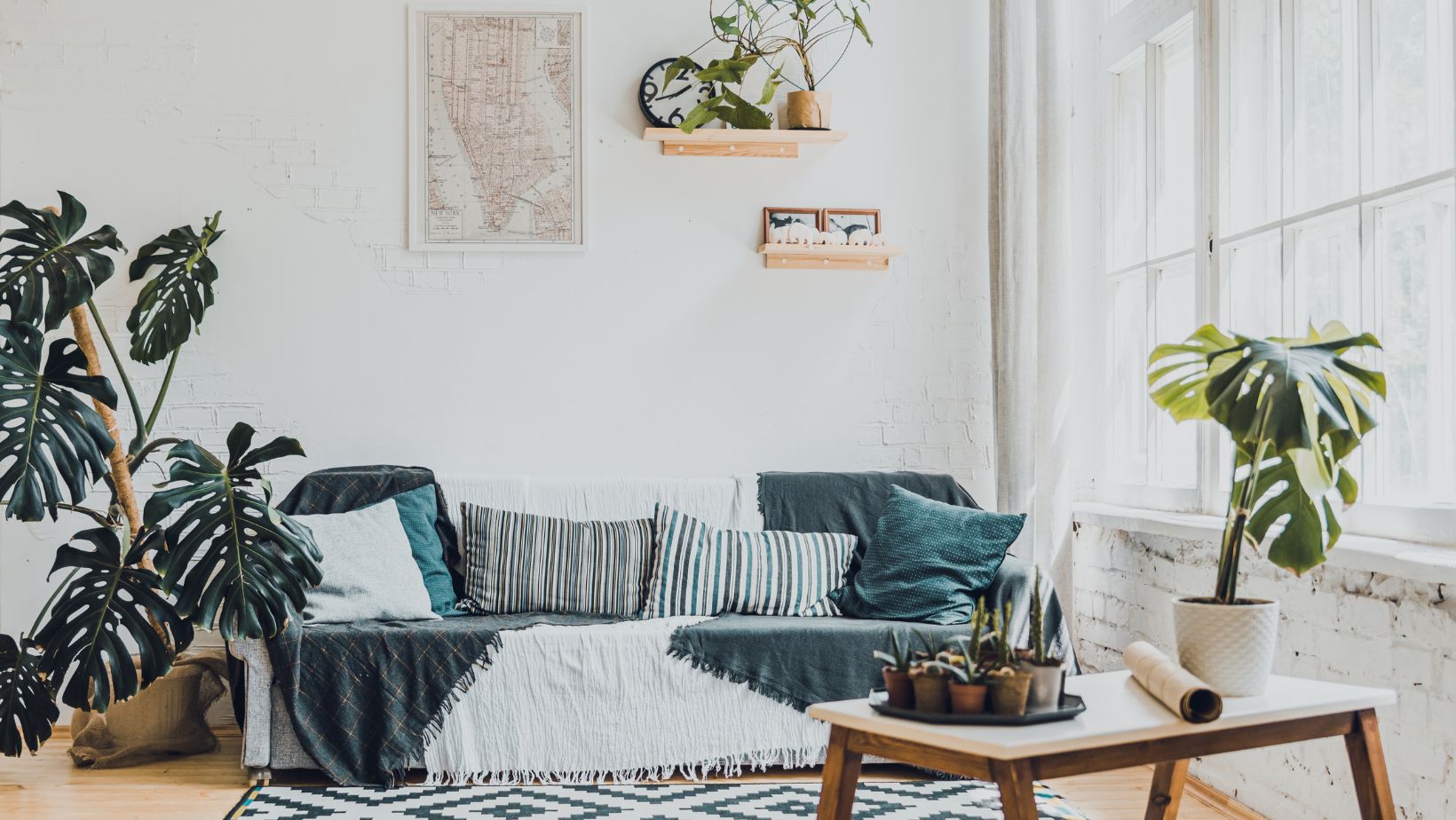As Canadian homeowners increasingly seek to create spaces that reflect the country’s stunning natural landscapes, nature-inspired design has emerged as the defining trend of 2025. This movement goes far beyond simply adding a few houseplants to a room—it’s about creating harmonious living spaces that capture the essence of Canada’s diverse ecosystems, from the deep greens of boreal forests to the warm earth tones of prairie landscapes.
The key to achieving this aesthetic lies in thoughtfully combining natural materials, carefully curated color palettes, abundant greenery, and artwork that celebrates the outdoors. Whether you’re incorporating canvas art prints by Poster Store featuring Canadian wilderness scenes or selecting reclaimed wood furniture that tells a story, every element should work together to blur the lines between indoor and outdoor living. This holistic approach to design not only creates visually stunning spaces but also supports mental well-being through the proven psychological benefits of connecting with nature in our daily environments.
Table of Contents
ToggleEmbracing Earth-Inspired Color Palettes
The foundation of any nature-inspired Canadian home begins with colors that reflect the country’s diverse landscapes. In 2025, Canadian home design trends strongly emphasize nature-inspired palettes, with earthy colors such as olive green, warm taupe, clay, and sandy beige reflecting the country’s forests, prairies, and shorelines. These hues create a sense of grounding and tranquility that immediately transforms the energy of any space.
Deep forest greens have become particularly prominent this year, with shades like “Pickle Green” leading Pinterest Trends 2025 as homeowners seek to evoke the feeling of walking through dense woodland. These rich, saturated tones work beautifully as accent walls in living rooms or bedrooms, creating dramatic focal points that anchor the entire design scheme. When paired with warm neutrals like mushroom gray or creamy whites, these colors create sophisticated palettes that feel both contemporary and timeless.
The psychological impact of these natural color choices cannot be overstated. Research shows that exposure to natural colors such as greens and earth tones can have calming effects and improve mood, which explains their growing popularity in interior design. By incorporating these hues through paint, textiles, and decorative accessories, homeowners can create spaces that actively contribute to their daily well-being while celebrating Canada’s natural heritage.
Consider implementing these colors through various design elements: rich emerald green kitchen cabinets paired with warm wood countertops, or soft sage walls complemented by terracotta pottery and natural fiber rugs. The key is to layer these tones thoughtfully, allowing each shade to enhance the others while maintaining visual harmony throughout the space.
Integrating Natural Materials And Textures
The resurgence of biophilic design in 2025 has placed natural materials at the forefront of Canadian interior design, with homeowners increasingly choosing elements that bring authentic outdoor textures indoors. Reclaimed wood has become particularly sought-after, not only for its environmental benefits but also for the character and history it brings to modern spaces. Whether used for accent walls, ceiling beams, or custom furniture pieces, weathered wood adds warmth and authenticity that cannot be replicated with manufactured materials.
Stone elements are equally important in creating nature-inspired interiors, with Canadian homeowners incorporating everything from river rock fireplace surrounds to slate flooring that echoes the country’s rugged shorelines. The Wabi-Sabi aesthetic, which emphasizes raw natural elements like weathered wood and natural stone accents, has gained significant traction as people seek to embrace imperfection and organic beauty in their homes. These materials work particularly well when combined with modern elements, creating spaces that feel both grounded in nature and thoroughly contemporary.
Sustainable options like bamboo flooring, recycled glass countertops, and composite materials made from natural fibers are also gaining popularity among environmentally conscious homeowners. These choices reflect a broader shift toward materials that offer both durability and eco-friendliness, allowing homeowners to create beautiful spaces while minimizing their environmental impact. The key is selecting materials that not only look beautiful but also tell a story about sustainability and connection to the natural world.
Texture plays a crucial role in this material integration. Consider incorporating rough-hewn timber beams alongside smooth river stones, or pairing the organic curves of live-edge wood tables with the geometric patterns found in natural stone. These contrasts create visual interest while maintaining the overall natural aesthetic, ensuring that each material contributes to a cohesive design narrative.
Creating Living Connections Through Plants And Art
No nature-inspired Canadian home is complete without abundant indoor greenery that brings the vitality of the outdoors inside year-round. The integration of plants goes beyond simple decoration—it’s about creating living ecosystems within our homes that purify air, reduce stress, and provide daily connection to growing, changing natural elements. Large statement plants like fiddle leaf figs or monstera deliciosa can anchor living spaces, while collections of smaller plants on shelves and windowsills create layers of green throughout the home.
The placement of plants should be strategic, taking advantage of natural light sources while creating visual flow throughout the space. Consider creating dedicated plant corners with varying heights and textures, from trailing pothos cascading from floating shelves to architectural snake plants standing sentinel in corners. Grouping plants of different sizes and leaf shapes creates natural vignettes that mimic the organic clustering found in forest understories.
Art selection plays an equally important role in completing the nature-inspired aesthetic. Large-scale landscape photography, botanical prints, and abstract pieces inspired by natural forms can serve as focal points that reinforce the connection to Canada’s wilderness. The key is choosing artwork that complements rather than competes with the living elements in the space, creating a harmonious dialogue between static and dynamic natural representations.
To maximize the impact of both plants and art, consider the interplay of natural and artificial lighting. Position artwork to catch morning light while ensuring plants receive adequate illumination throughout the day. This thoughtful arrangement creates spaces that feel alive and connected to the natural rhythms of light and shadow that define our outdoor experiences.


